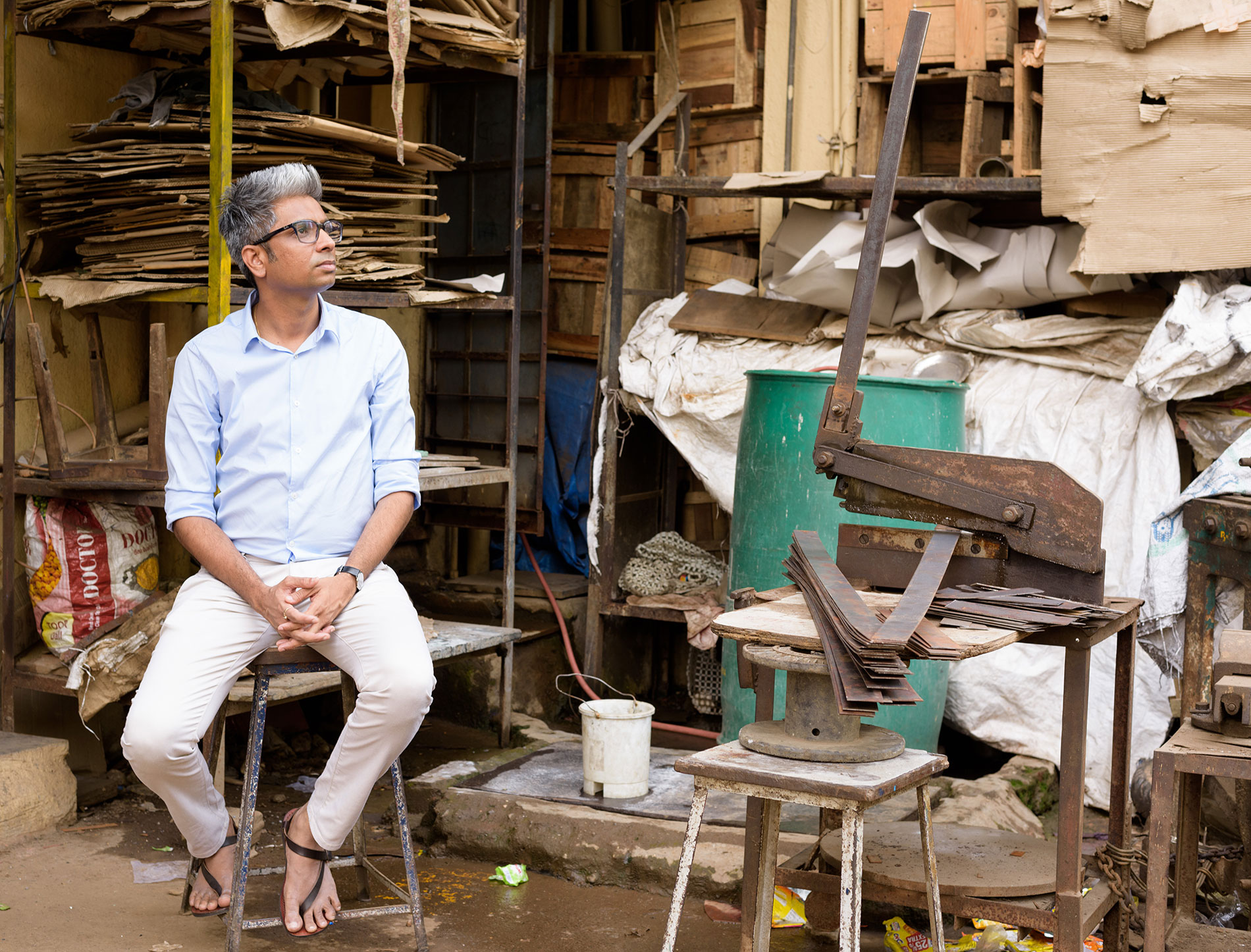Art of Change 21 – How did you start using recycled materials in your work?
Manish Nai – Collecting old stuff is my hobby and obsession. In my daily life I am overwhelmed by it! It is time for us to understand how and why we consume the way we do and face up to our overconsumption. Waste is everywhere in India. My country generates over 60 million tonnes of waste every year and only a small part of it is processed. We have a huge second-hand market where we barter, to exchange old clothes for new containers for instance. I myself have been collecting waste materials for a very long time. I like to visit the second-hand market, collecting and storing what I come across. Found objects entered my work in 2011, when I decided to reuse old discarded clothes. I made three small sculptures. I compressed the clothes by hand. Now, as well as used clothes, I also use old newspapers, cardboard, old books and so on that I collect from my surroundings and from my friends and family. I work with waste materials, but it is only a starting point; my main focus is on the transformation process. My art is all about transforming. I enjoy my process. Let’s take newspapers, for instance: I put them in water, the pictures become blurry, and so I stop when I have a visual effect that I like, like a time-worn object. All of my work is about time and space. To extend time and to reduce space. Reduction is central to me, using compression. I first did it by hand. Now I use machines, especially for metal, which can’t be compressed by hand.
AOC21 – Your transformation process consists of reducing volumes and stretching time. Therefore it can be seen as an ecological process. This is what ecology is: creating more experience with less material, right?
M.N. – If people look at my work – and take the time to do that – then I assume that they will feel something related to time and space as a part of that process, dealing with valuing time and minimising consumption. I am happy if I contribute to more ecological awareness and people see ecological messages in my art. But when I create it I have no intention of delivering any kind of message, I am only thinking about the transformation process. The message also depends on who receives it. In Europe, where upcycling is trendy, where fast fashion is called into question, I am currently viewed as an upcycling artist. Someone told me that I was “the master of the second-hand world”, which I take as a compliment! I am glad my work fits with ecological values but this is an involuntary result of my work. In India, where using second-hand things is very common, I am just seen as a contemporary artist using materials that are part of our daily lives.
AOC21 – How is life during Covid?
M.N. – Covid was at its most prevalent in Mumbai. We had a complete lockdown from March until June. I couldn’t go to the studio and neither did any of my team. I had to work at home but I had nothing at home to work with, so I had to borrow pencils from my little boy and the only thing I could do was sketch drawings. It took me back to my youth when I was an art student living in a bedroom and working from home. I took pictures from my place, like views from the window, which I posted on Instagram. All the rooftops around became very lively during confinement, with sports, games, people eating on roofs and so forth. This time at home was also a time dedicated to my family. This lockdown period was a slow down, which was good in a way. Mumbai is so fast. Our mad consumption was stopped by force, not by choice – that I would prefer. It also allowed me time to think about my work.
Then I was able to go back to my studio in June, but nothing has returned to normal yet. Even today, I need permission to go to my studio and there are only a limited number of people allowed in my studio at one time. Firstly, I have implemented a sanitary system in the studio. All the habits of the studio have changed. A new life has begun. With more intimacy.
Credit: Anil Rane
More information about Manish Nai, here
Conversation led by Alice Audouin, September 2020
Find all the articles in Impact Art News n°22– September 2020

